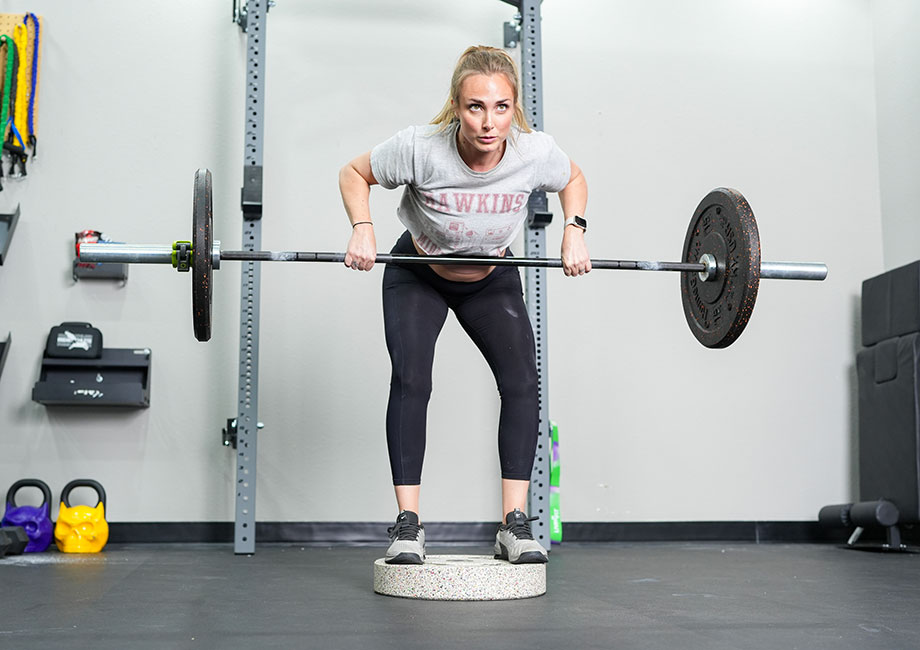We test and review fitness products based on an independent, multi-point methodology. If you use our links to purchase something, we may earn a commission. Read our disclosures.
The untrained eye may see someone doing the Pendlay row in the gym and assume they’re performing a traditional barbell row. Sure, the similarities between these two tried-and-true muscle-building back exercises are undeniable, but there’s one key difference—the range of motion.
First introduced by famed weightlifting coach Glenn Pendlay, the Pendlay row has you come to a dead stop with your barbell on the floor before beginning your next rep rather than maintaining the consistent hold and movement of the barbell row.
Kate Meier, NASM-CPT, USAW-L1, CF-L1, and GGR head of content, assists in breaking down the Pendlay row and its benefits, along with how to do it correctly, expert form tips, variations/alternatives, and more!
How to Do the Pendlay Row
- Stand over a loaded barbell with your feet shoulder-width apart.
- Push back your hips, bend your knees, and lower your chest to reach down and grip the bar slightly outside of shoulder-width.
- Tighten your core and engage your lats to pull the bar into your body.
- Squeeze the contraction at the top of the movement.
- Slowly lower the barbell to the floor and place it down at a dead stop in the starting position.
- Repeat as needed for reps.
Primary muscles worked: Lats, traps, rear deltoids
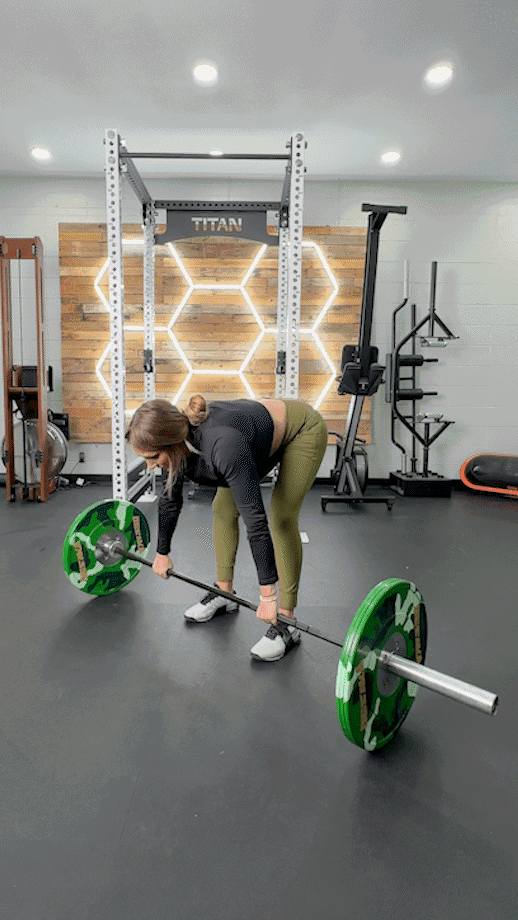
Trainer Tips on Form
The Pendlay row is the ultimate move for building muscle in the upper back, lower back, and posterior chain, but you won’t get as many (or any) strength and hypertrophy gains if you’re not working with proper form.
RELATED: Hypertrophy Workout
Here are our top tips to help you get your form dialed in.
Keep Your Chest Parallel to the Floor
The barbell row basically involves keeping the bar off the floor for the whole set. Because of this, you can afford to stand at a 45-degree angle and give a little relief to your hamstrings.
The Pendlay row allows no such luxuries.
“Each Pendlay row rep begins and ends from the floor, so you need to keep your body low in order to engage the right muscle groups throughout the full range of motion,” says Kate Meier, CPT, USAW-L1, CF-L1. “Hinge forward from hips to grip the bar, then hold that position through each phase of the exercise.”
To maintain the proper positioning, keep your upper body parallel to the floor. Your shoulders and hips should be horizontally stacked at all times.
If you’re having difficulty holding this position, try some mobility exercises to get loose or use blocks, weight plates, or a weightlifting platform to reduce your range of motion.
RELATED: DIY Pulling Blocks
Initiate With Your Back Muscles
Ideally, your back muscles, mainly the latissimus dorsi, rhomboids, and spinal erectors, will bear the brunt of the workload. As for your arms, while they do receive muscle activation, they’re mostly there to grip the bar and guide it along its path.
“Start with your body hinged forward, back flat, core tight, and knees slightly bent so you can grip the bar. Then, initiate the pull with your back muscles rather than your arms, letting your shoulder blades retract naturally as the bar travels into the body,” says Kate. “Squeeze that contraction at the top, then slowly guide the bar back to the floor safely.”
RELATED: Hip Hinge Exercises
If you’re struggling to engage your back muscles to initiate the pull, consider using lighter weights or an unloaded bar until you learn how to do this properly.
For specialized advice and feedback, don’t hesitate to consult a personal trainer (there are even options for online personal trainers) or other qualified fitness professionals.
Control the Eccentric Phase
A 2022 study published in the European Journal of Applied Physiology1 determined that eccentric strength training alone is nearly equivalent in terms of effectiveness as typical eccentric-concentric combination training. So, it’s extremely important not to skimp on the eccentric phase of any exercise. For the Pendlay row, this means the step where you place the bar back on the floor at a dead stop.
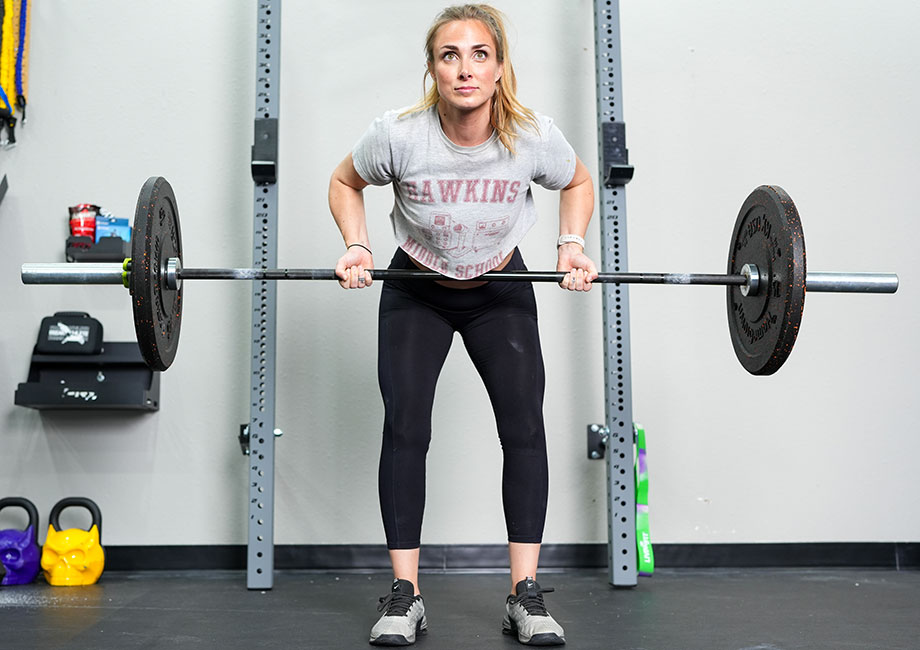
“Controlling the bar’s descent is significantly more advantageous than dropping the bar,” says Kate. “Slowly guiding it back down maximizes your muscles’ time under tension, making each rep even more impactful.”
Common Pendlay Row Mistakes
There are many places for beginners to go astray when learning the proper form for the Pendlay row. Here are the most common mistakes associated with the Pendlay row and how to fix them.
Rounding Your Back
As with most back exercises, the Pendlay row calls for a neutral neck and spine to help maintain proper form. Meaning you’ll want to push your hips back, lower your chest, and bend your knees to get low enough to grip the bar without rounding your back.
Poor hip mobility, hamstring flexibility, core strength, and other limiting factors, however, may impede your ability to maintain a straight back and neutral spine when initiating the movement.
“Initiating the Pendlay row with a rounded back diminishes the amount of power you’re able to generate, but it’s also dangerous,” says Kate Meier, CPT, USAW-L1, CF-L1. “Too much spinal flexion or extension leaves the back susceptible to shear forces that may lead to pain, strains, or disc herniations2.”
As previously mentioned, if you’re struggling to get a grip on the bar without compromising this critical form, consider using blocks, weight plates, or a weightlifting platform to elevate the bar and reduce the distance between you and the barbell.
RELATED: Best Weight Plates
Flaring Your Elbows Out
It’s normal for your elbows to move away from your body just a bit, especially if you’re a taller lifter with long arms. What you don’t want, however, are chicken-wing arms totally flared to either side of the body.
“Letting your elbows flare shifts the emphasis off your lats and onto your arms and upper trapezius muscles, diminishing the amount of overall power you’re able to create,” says Kate. “More importantly, it puts the shoulders in a potentially dangerous position, which may lead to pain or a shoulder injury.”
So, for maximum power and minimal risk of injury, keep those elbows tucked into the body as much as possible.
Heels Coming Off the Floor
Proper Pendlay row form requires keeping both feet firmly planted on the floor from start to finish. Holding that position may feel awkward at first and requires loads of back strength, core stability, lower body flexibility, and good balance to pull it off. If you have weakness in any of these key areas, it’s possible that the barbell may pull you forward off your heels, typically during the eccentric phase of the movement.
RELATED: Functional Core Exercises
“Controlling the eccentric phase of the exercise is important for maximizing strength gains and muscle growth, but it also is important for preventing injuries,” says Kate. “If your heels are coming off the floor, it’s likely the result of going too heavy.”
We get it; it’s important to progress to heavy weights as you become more proficient, but increasing weight too quickly often works against you in the long run. If your heels are losing contact with the floor mid-lift, consider using lighter weights.
Pendlay Row Variations and Alternatives
Coach Glenn Pendlay developed his row variation to provide an alternate stimulus to the same target muscle groups. Here are some more variations and alternatives for lifters to keep things fresh.
RELATED: Bent-Over Row Alternatives
Deficit Pendlay Row
Why do it: “One of the things that makes the Pendlay row so good is its larger range of motion compared to the traditional barbell row,” says GGR Head of Content Kate Meier, CPT, USAW-L1, CF-L1. “The deficit Pendlay row takes this one step further, maximizing your muscles’ time under tension even more.”
How to do it:
- Place a loaded barbell on the floor in front of you.
- Place a weight plate or other raised platform behind the barbell.
- Step up onto the plate or platform, then reach down to grip the bar by pushing your hips back, bending your knees, and lowering your chest until it’s parallel to the floor.
- Brace your core and use your lat muscles to pull the bar into your body.
- Squeeze the contraction, then slowly lower the bar back to the floor.
- Reset and repeat as needed.
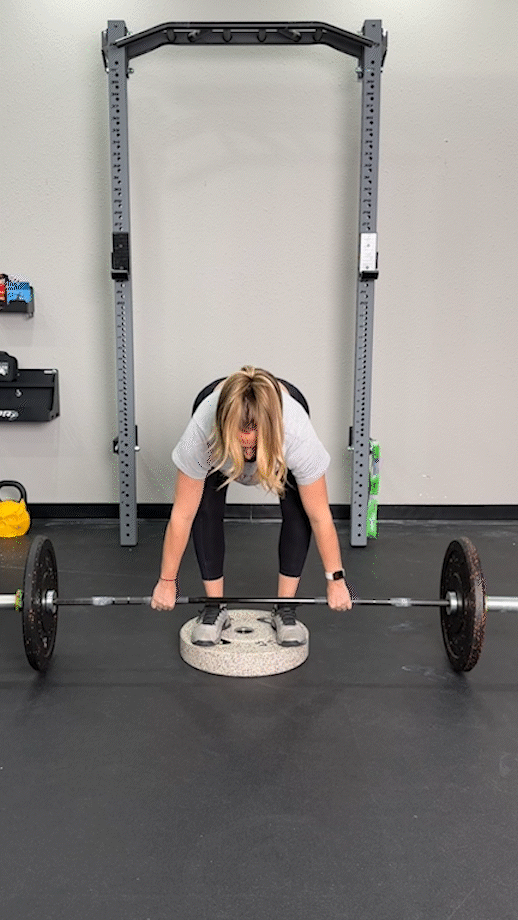
Double Kettlebell Pendlay Row
Why do it: Swapping your barbell for two kettlebells reduces the range of motion slightly, since kettlebells are typically taller than barbells, but you’ll also gain the ability to focus on each arm independently to ensure they work equally. If you want to shake things up (or only have a single kettlebell) turn this into a unilateral exercise by alternating sides.
How to do it:
- Place two kettlebells on the floor in front of you.
- Reach down to grip them using a neutral grip.
- Pull the kettlebells upward using your back muscles.
- Squeeze your lats, then slowly lower the kettlebells back down.
- Reset and repeat as needed.
RELATED: Best Kettlebells
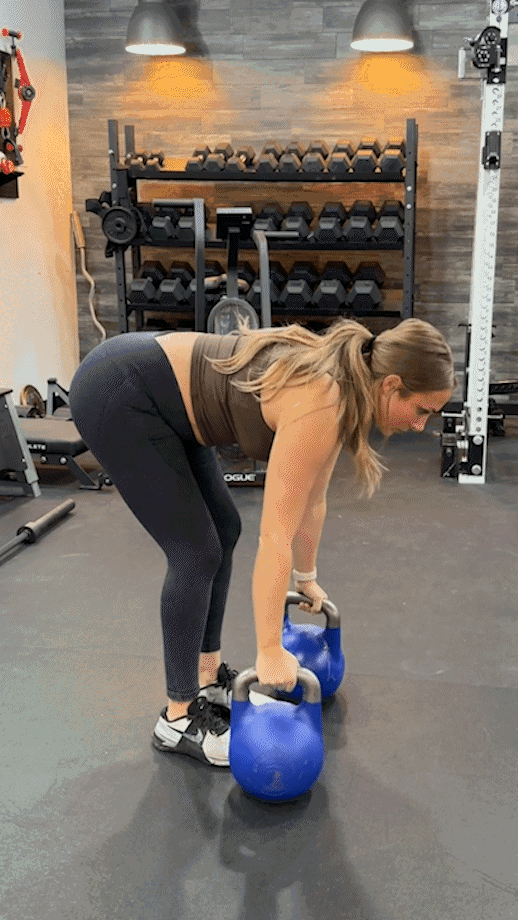
Seal Row
Why do it: The seal row (which made our list of the best exercises for upper back) uses a bench to take your lower body out of the equation, ensuring you get upper body activation almost exclusively in order to maximize your gains.
How to do it:
- Lie prone (face down) on a weight bench holding a barbell or two dumbbells in front of the body with arms fully outstretched.
- Engage your back muscles to pull the weight into the body.
- Squeeze the contraction, then lower the weight back down slowly.
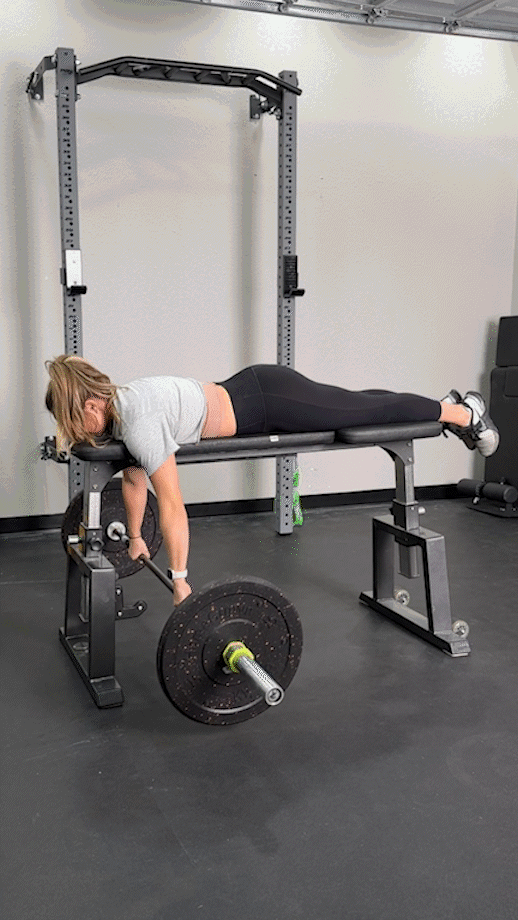
Bent-Over Barbell Row
Why do it: You didn’t think we’d leave this exercise out, did you? There’s a reason you’ll find the bent-over barbell row in virtually every bodybuilding or powerlifting strength training regimen. The barbell row is a proven avenue for a stronger back, greater muscular hypertrophy, and enhanced muscular endurance.
How to do it:
- Stand over a loaded barbell with your feet shoulder-width apart.
- Reach down and grip the bar with an overhand grip.
- Slowly stand, lifting the bar off the floor until it hangs between the knees and waist. Keep your back straight, knees slightly bent, and body angled at approximately 45-degrees.
- Tighten your core and use your lats to pull the bar into your sternum.
- Pinch your shoulder blades together and squeeze your back muscles at the top, then slowly guide the bar back down until your arms are fully outstretched
- Cycle into the next rep. Repeat as needed.
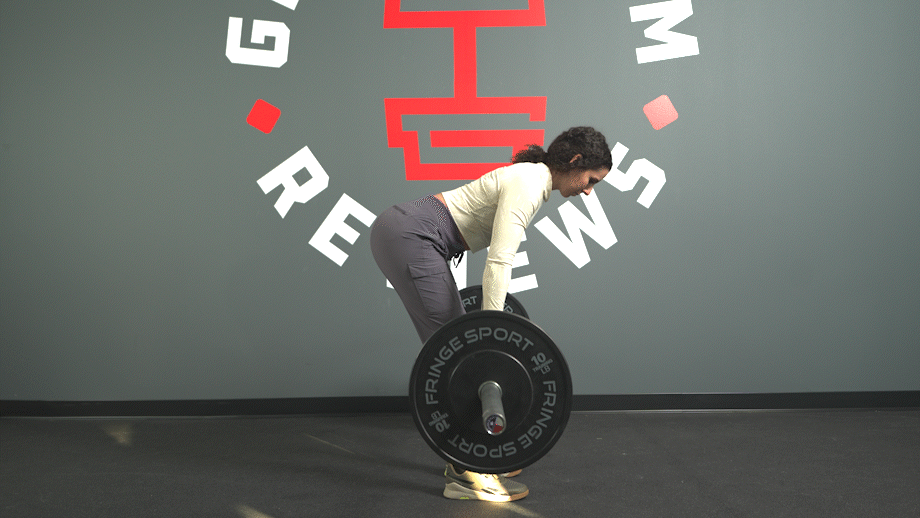
Reverse-Grip Barbell Row
Why do it: Simply changing the positioning of your hands gives you all the benefits of the overhand barbell row with a little extra oomph for your biceps and lats.
How to do it:
- Stand over a loaded barbell with your feet shoulder-width apart.
- Reach down and grip the bar with an underhand grip.
- Slowly stand, lifting the bar off the floor until it hangs between the knees and waist. Keep your back straight, knees slightly bent, and body angled at approximately 45-degrees.
- Tighten your core and use your lats to pull the bar into your sternum.
- Pinch your shoulder blades together and squeeze your back muscles at the top, then slowly guide the bar back down until your arms are fully outstretched
- Cycle into the next rep. Repeat as needed.
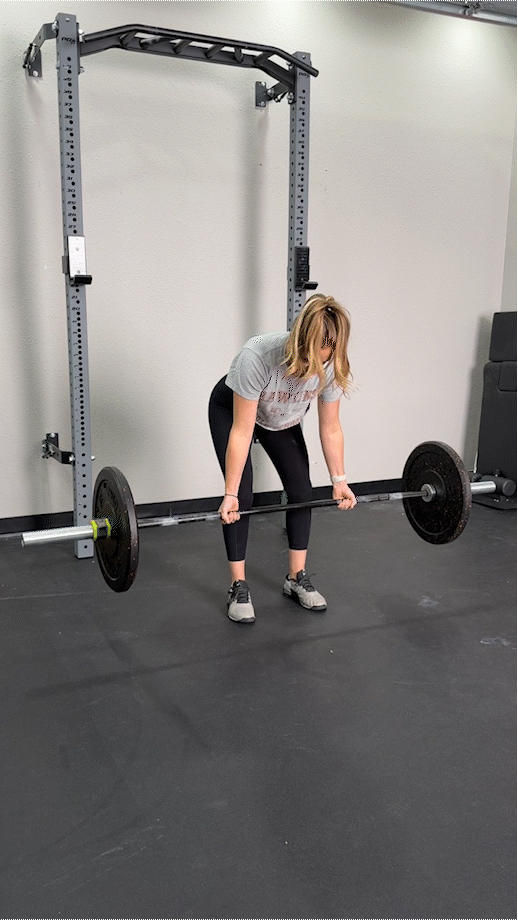
Useful Pendlay Row Equipment and Accessories
If you’re going to start doing Pendlay rows, you’ll need a few home gym essentials.
Barbell
Ask a hundred different trainers and weightlifting coaches what’s the best barbell on the market, and you’re bound to get an array of answers.
If you ask us here at Garage Gym Reviews, we’re partial to the Rogue Ohio Power Bar, which is excellent if you’re looking for a high-quality powerlifting bar. Similarly, we recommend the Rogue Ohio Bar if Olympic weightlifting is more your speed.
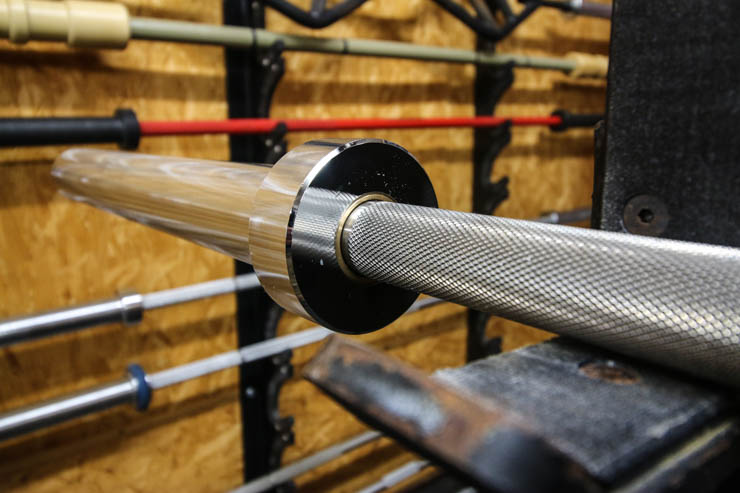
From Pendlay rows to weight room classics like the bench press, back squat, and deadlift, there’s always a need for a solid barbell in your home gym.
Lifting Straps
When the lifting gets tough, it’s a good idea to have a pair of the best lifting straps to keep you from missing out on those precious gains.
Lifting straps swoop in to save the day when your grip is failing, but there’s still gas left in the tank. They enable you to eke out a few extra reps and fully exhaust those back muscles rather than giving up because you can’t grip the bar.
Fat Gripz
Slapping a Fat Gripz attachment on the barbell during your Pendlay row reps makes it harder to grip the bar, which sounds like a bad thing, but it’s just what you need if you’re looking to improve your grip strength. Better grip strength isn’t just a niche skill for athletes. Studies show3 that greater grip strength may contribute to reduced heart failure risk, making it worthwhile to add to your training.
Pendlay Row: FAQs
What is the difference between a Pendlay row and a DB row?
The key differences between the Pendlay row and the dumbbell row are the starting position and range of motion. The dumbbell row involves rowing the dumbbells from the hang position into the body, while the Pendlay row requires the lifter to pull the bar from the floor each time.
What are Pendlay rows good for?
The benefits of the Pendlay row include:
– Improved back strength
– Increased back hypertrophy
– Enhanced muscle endurance
– Improved core stability
– Increased power output
– Enhanced ability to perform pulling movements
What is a good Pendlay row weight?
“What’s good for you may not be considered good for a trained strength athlete, but it may be very good compared to gen pop,” says Kate Meier, CPT, USAW-L1, CF-L1, and GGR head of content. “Generally speaking, lifters are capable of moving less weight for the Pendlay row versus the traditional barbell row, so keep this in mind if you already have a baseline for your regular barbell row.”
Should Pendlay rows be overhand or underhand?
Traditional barbell rows and Pendlay rows are performed with an overhand grip, but that doesn’t mean it’s the only way to perform the exercise.
Switching the pronated grip to a supinated one increases activation in your biceps and lower lats, trapezius, and back muscles, whereas using an overhand grip emphasizes muscle groups in the upper back instead.
RELATED: Lower Back Exercises
References
1. Sato S, Yoshida R, Murakoshi F, et al. Comparison between concentric-only, eccentric-only, and concentric-eccentric resistance training of the elbow flexors for their effects on muscle strength and hypertrophy. Eur J Appl Physiol. 2022;122(12):2607-2614. doi:10.1007/s00421-022-05035-w
2. Michaud F, Pérez Soto M, Lugrís U, Cuadrado J. Lower Back Injury Prevention and Sensitization of Hip Hinge with Neutral Spine Using Wearable Sensors during Lifting Exercises. Sensors (Basel). 2021;21(16):5487. Published 2021 Aug 14. doi:10.3390/s21165487
3. Laukkanen JA, Khan H, Lavie CJ, et al. Inverse Association of Handgrip Strength With Risk of Heart Failure. Mayo Clin Proc. 2021;96(6):1490-1499. doi:10.1016/j.mayocp.2020.09.040
Further reading

Check out our RPM Atom review to get the inside scoop on this all-in-one home gym kit. Read more

What muscles do chin-ups work? Our personal trainer breaks down the movement and what you can expect from this exercise. Read more
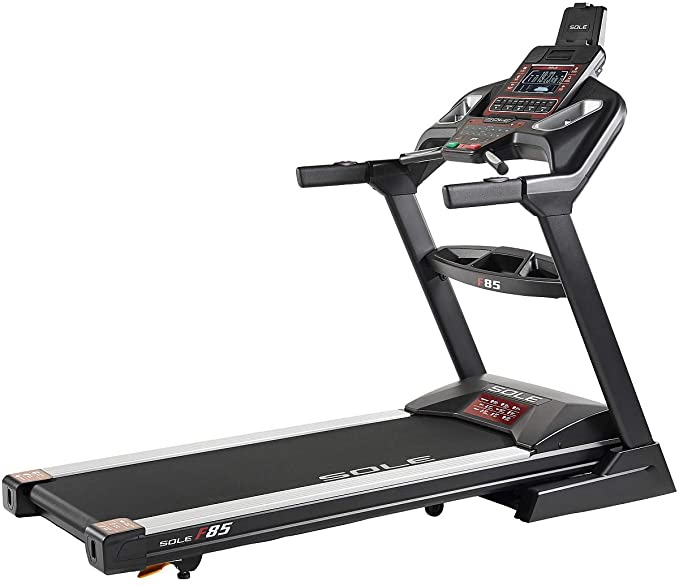
Check out this Sole F85 review to see if this durable treadmill is the cardio machine for you. Read more

Looking for the best Quest Bar flavor? Our editorial team conducted a blind taste test, and we’re ready to share the results. Read more

